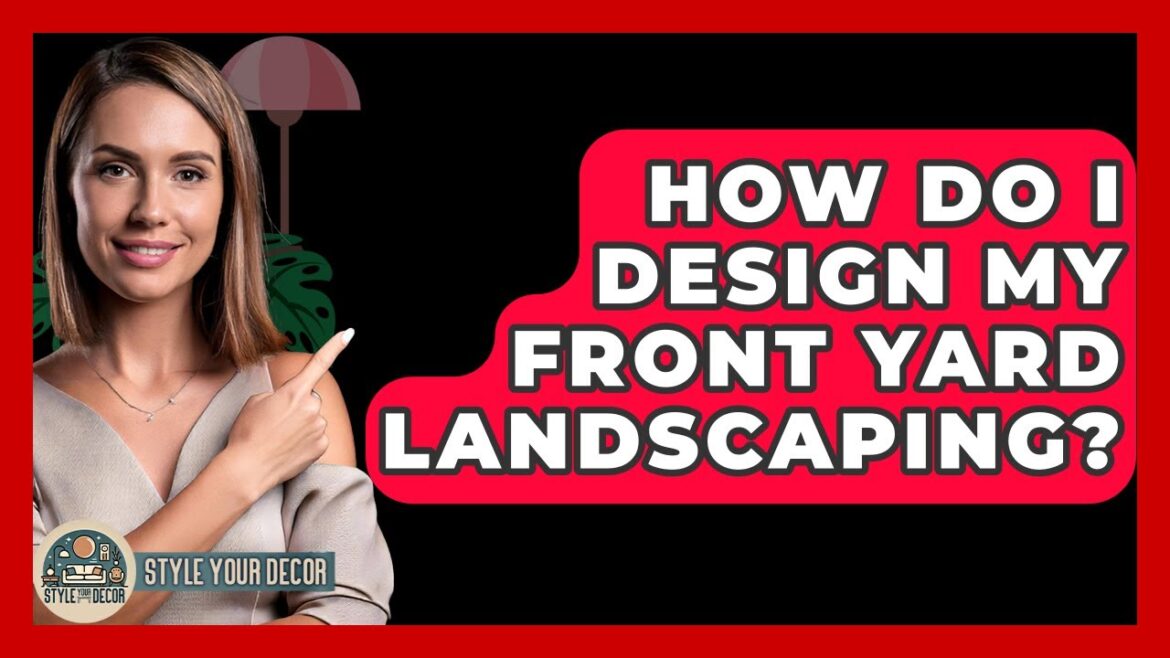How Do I Design My Front Yard Landscaping? Transforming your front yard into a beautiful and functional space can significantly enhance your home’s appearance and charm. In this video, we’ll guide you through the essential steps to design your front yard landscaping effectively. We’ll cover how to assess your yard’s unique characteristics and how to create a balanced and proportionate layout that works well with your home.
We’ll discuss the importance of lines and flow, showing you how to use walkways and plant arrangements to create a pleasing visual experience. You’ll learn about the effective use of color and texture to achieve a rich and inviting atmosphere. Additionally, we’ll touch on the significance of focal points and how they can draw attention to your front yard.
Practical considerations such as functionality and accessibility will also be addressed, ensuring that your design is not only beautiful but also practical. Lastly, we’ll provide tips on how to sketch your plan and implement your design while maintaining consistency with your home’s architectural style.
Join us for this helpful discussion and subscribe to our channel for more tips on interior and exterior design that will inspire your next home project.
⬇️ Subscribe to our channel for more valuable insights.
🔗Subscribe: https://www.youtube.com/@styleyourdecor/?sub_confirmation=1
#FrontYardDesign #LandscapingTips #CurbAppeal #OutdoorDesign #GardenPlanning #HomeImprovement #LandscapeArchitecture #PlantArrangement #ExteriorDesign #GardenIdeas #HomeLandscaping #OutdoorSpaces #LandscapeDesign #YardMakeover #BeautifulGardens
How do I design my front yard landscaping? Are you looking to transform your front yard into a stunning space that enhances your home’s curb appeal? Designing your front yard landscaping can be an exciting project that reflects your personal style while complimenting your home. Let’s break down how to create an inviting outdoor area that stands out. First, assess your yard’s conditions. Take note of the size, shape, and slope. Consider existing features like trees, pathways, and how you plan to use the space. This is similar to understanding a rooms function before decorating. Next, think about balance and proportion. Balance can be symmetrical with matching plants on either side of a walkway or asymmetrical using different elements that still feel evenly weighted. Proportion is about ensuring that plants and features are the right size for your yard and home. Lines and flow are essential in guiding the IAN movement. Use walkways, garden beds, and rows of plants to create lines. Horizontal lines can make the space feel wider, while vertical lines add height. Align these lines with your home’s architectural features for a harmonious look. Transition and gradation are important for smooth changes in plant sizes, colors, or textures. For instance, place taller shrubs near the house, medium plants in the middle, and low ground covers near walkways. This layering effect adds depth. Color and texture play a big role, too. Choose a color palette that complements your home’s exterior. Mix foliage and flowers with different textures to create richness without overwhelming the space. Repeating colors and textures can unify the design. Repetition and unity are key concepts. Repeat certain plants, colors, or materials to create a cohesive look. This helps prevent the space from feeling scattered. Focal points are great for drawing attention. Consider adding a specimen tree, a sculpture, or a decorative planter. These elements act like artwork in a room, giving the eye a place to rest. Functionality and accessibility are practical aspects to consider. Plan for walkways, lighting, and seating areas. Ensure pathways are wide enough and materials are safe and durable. Think about how the front yard will be used and how it connects to your home entrance. To implement your design, start by sketching a plan that includes existing features and proposed elements. Plant from large to small, beginning with trees, followed by shrubs, perennials, and ground covers. Use hardscape elements like paths and walls to structure the space and contrast with plants. Maintain consistency with your home’s architectural lines by aligning beds or paths with building edges or windows. Incorporate seasonal interest by selecting plants that bloom or change color at different times of the year. By applying these principles, your front yard can become a welcoming extension of your home, enhancing curb appeal and making a great first impression.


Comments are closed.